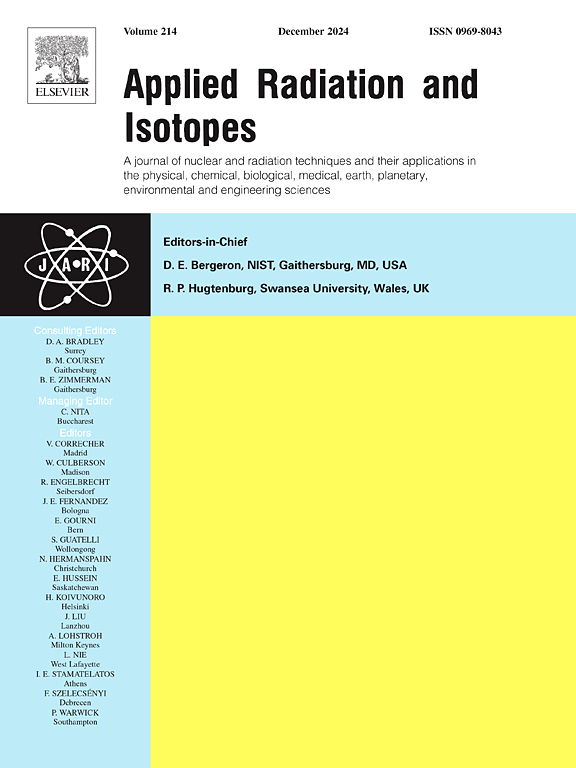Evaluation of 18F-FDG absorbed dose ratios in percent in adult and pediatric reference phantoms using DoseCalcs Monte Carlo platform
IF 1.6
3区 工程技术
Q3 CHEMISTRY, INORGANIC & NUCLEAR
引用次数: 0
Abstract
This study investigates the field of radiation exposure in nuclear medicine, which might have implications for exposure to ionizing radiation in pediatric cases. To demonstrate the difference in radiosensitivity between younger patients and adults and to highlight the need for individualized radiation protection procedures when investigating medical imaging and therapy, this study examines the absorbed dose ratios in percent (ADR%) for 18F-FDG. This parameter is an important indicator, illustrating the percentage of radiation dose absorbed by specific organs/tissues concerning the emitted radiation from different body regions.
The methodology involves calculating ADR% in twelve voxel-based models for adults, children, and newborns, as referenced by International Commission on Radiological Protection (ICRP) Publications 110 and 143. The simulations used the 18F positron spectrum from ICRP Publication 107 and Livermore models. These simulations were performed using the DoseCalcs Monte Carlo platform.
We have calculated the S-values and ADR% using the DoseCalcs simulations of the 18F positrons and provided a comprehensive dataset of ADR% results. This dataset evaluates the impact of anatomical variation on absorbed dose in target regions. It consists of 141 target regions and 8 different source regions.
Significant differences in radiosensitivity were observed in ADR% values among various source–target combinations for each age and sex group. The self-irradiation ADR% reaches up to 95%, while the cross-irradiation ADR% varies, ranging approximately from 0.1% to 12%, depending on the mass of the target organ, the distance between it and the source organ, and the chemical composition of these organs. Also, the variations observed across different age and sex phantoms highlight the importance of personalized internal dosimetry, especially for pediatric cases with heightened radiosensitivity. Healthcare practitioners can use the dataset of ADR% values as the first stage to illustrate variability and optimize nuclear medicine imaging with 18F-FDG while reducing radiation risks.
求助全文
约1分钟内获得全文
求助全文
来源期刊

Applied Radiation and Isotopes
工程技术-核科学技术
CiteScore
3.00
自引率
12.50%
发文量
406
审稿时长
13.5 months
期刊介绍:
Applied Radiation and Isotopes provides a high quality medium for the publication of substantial, original and scientific and technological papers on the development and peaceful application of nuclear, radiation and radionuclide techniques in chemistry, physics, biochemistry, biology, medicine, security, engineering and in the earth, planetary and environmental sciences, all including dosimetry. Nuclear techniques are defined in the broadest sense and both experimental and theoretical papers are welcome. They include the development and use of α- and β-particles, X-rays and γ-rays, neutrons and other nuclear particles and radiations from all sources, including radionuclides, synchrotron sources, cyclotrons and reactors and from the natural environment.
The journal aims to publish papers with significance to an international audience, containing substantial novelty and scientific impact. The Editors reserve the rights to reject, with or without external review, papers that do not meet these criteria.
Papers dealing with radiation processing, i.e., where radiation is used to bring about a biological, chemical or physical change in a material, should be directed to our sister journal Radiation Physics and Chemistry.
 求助内容:
求助内容: 应助结果提醒方式:
应助结果提醒方式:


